A prolific sculptor, architect, painter and draughtsman; Gianlorenzo Bernini was celebrated for his astonishing ability to produce ‘living’ marble sculpture. He is regarded today as the most important early exponent of the Italian Baroque style.
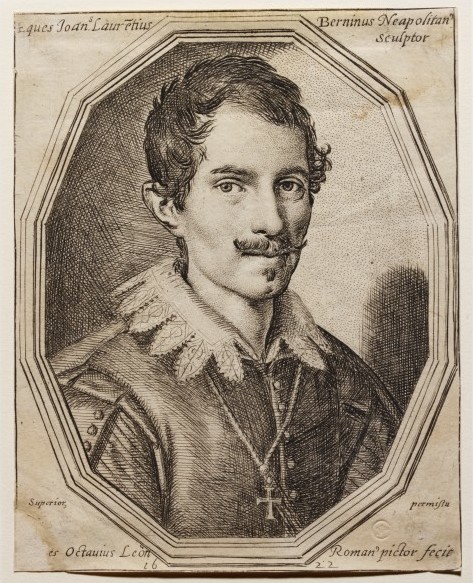
Bernini was patronised by a succession of popes and other important patrons as a sculptor, an architect and a designer of theatrical performances and festivals.
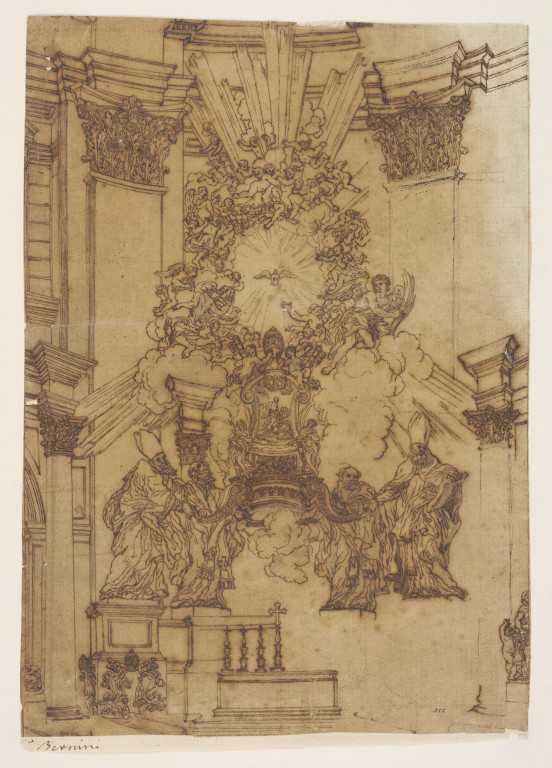
He worked extensively at St Peter’s Basilica, where he created the baldacchino (canopy), Cathedra Petri and two papal tombs, as well as designing St Peter’s Square with its colonnades, and the great ceremonial staircase to the Vatican Palace.

Bernini produced a series of dramatic over-life-size sculptures for Cardinal Scipione Borghese, including Pluto and Proserpine, Apollo and Daphne and David.
I’ve already mentioned this monumental sculpture of Neptune and Triton in an earlier post. But it is such a star that I couldn’t leave it out today. It is one of Bernini’s earliest works and, with its drama and vigour, exemplifies the new approach to composition that was being introduced at this time.

I’ve included a photograph above showing our technicians moving the sculpture on a previous occasion, as at this stage in the project our thoughts are very much on the practicalities involved in installing this monumental piece in the new galleries. I’ll be sure to document its move early next year!
The subject of Neptune, the classical god of the sea, and his son Triton was extremely appropriate to the sculpture’s function as a fountain. It stood in a large fishpond, the centrepiece of Cardinal Montalto’s garden, and was one of the most celebrated sights in Rome in the 17th and 18th centuries. Neptune was a popular design motif for fountains and below is a design by Bernini for another fountain depicting Neptune.
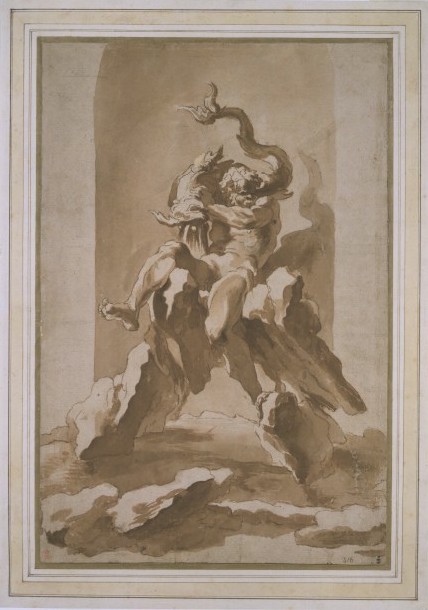
As part of the design process for his large marble commissions, Bernini often made preliminary terracotta models, known as bozzetti. The terracotta sculpture below represents the Franciscan nun Ludovica Albertoni at the point of her death (in 1553) and is a model for the monument to her commissioned by Cardinal Paluzzi degli Albertoni for the Altieri chapel in the church of San Francesco a Ripa, Rome. Cardinal Albertoni was a descendent of her family and when the pope sanctioned the cult of the Blessed Ludovica Albertoni in January 1671, the cardinal commissioned the refurbishment of the chapel where his holy ancestor was buried.
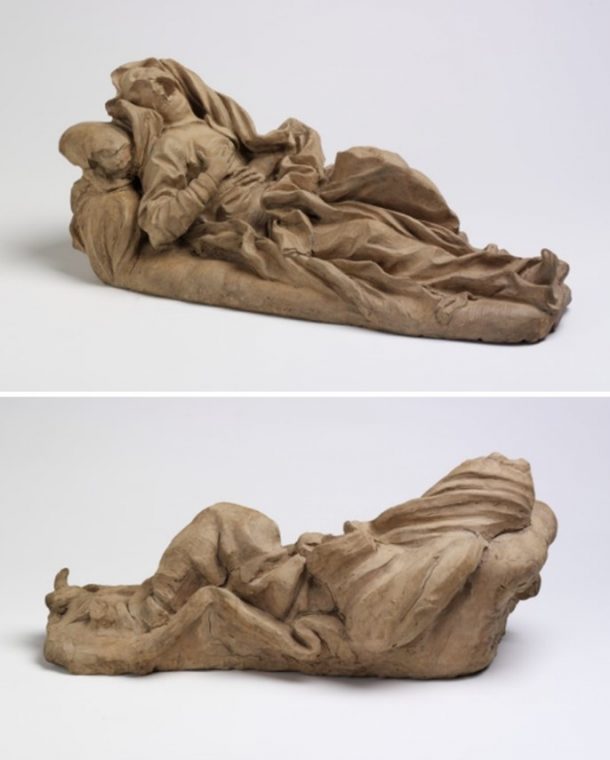
Her flowing robes and sensual expression help to convey her believed ecstatic union with God. This dramatic and sensual depiction of spiritual ecstacy encapsulates the baroque style. Although, knowing that she died of a fever while tending the sick, it also makes me think of her possibly suffering dramatic, fevered delirium in her final hours.
Unusually, the back of this bozzetto is modelled, suggesting it may have been made as a presentation piece for the patron to review. Unlike many of his other compositions, which were carved by his assistants, Bernini executed the marble largely himself, and he undertook the work for no payment.

The bozzetto below is a model for the monument to Pope Alexander VII. The Pope himself commissioned Bernini to design a tomb incorporating his portrait in marble for St Peter’s Basilica in Rome. It is rather more sketchily modelled than the one above but still clearly conveys Bernini’s intention for the resulting portrait.
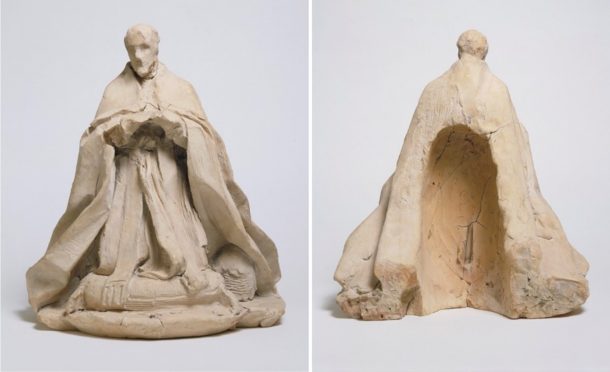
Close inspection of the model reveals some of Bernini’s working methods. I was very interested to discover that, as the monument was to be located above a doorway, he modelled the pope’s head for the bozzetto separately so that it could be adjusted to the correct angle to be seen from below. (I have to resist the urge for this to conjure up ideas of a ‘nodding Pope’ car accessory!)
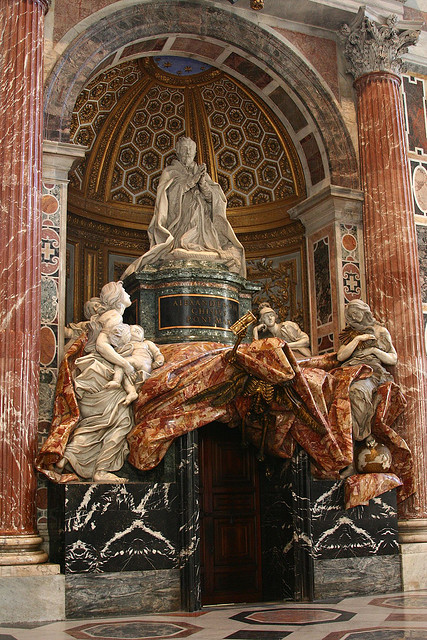
For this brief acknowledgement of Bernini’s life, I think it only fitting to end with a terracotta bozzetto depicting Time and Death, which is thought to also probably be the work of Bernini.
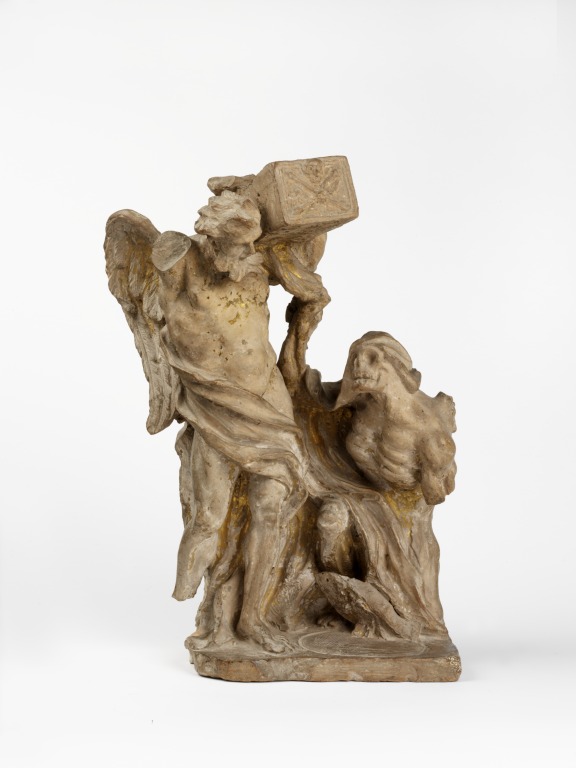
It depicts the victory of Time over Death, representing the triumph of immortality (fame and reputation) which was a recurrent theme in Bernini’s work. It simultaneously reminds the viewer of mortality. Despite extensive research, it appears to not be a study for any known sculpture. It may have been made for a tomb, or perhaps as preparation for an ephemeral work, such as a temporary structure for a funeral.
